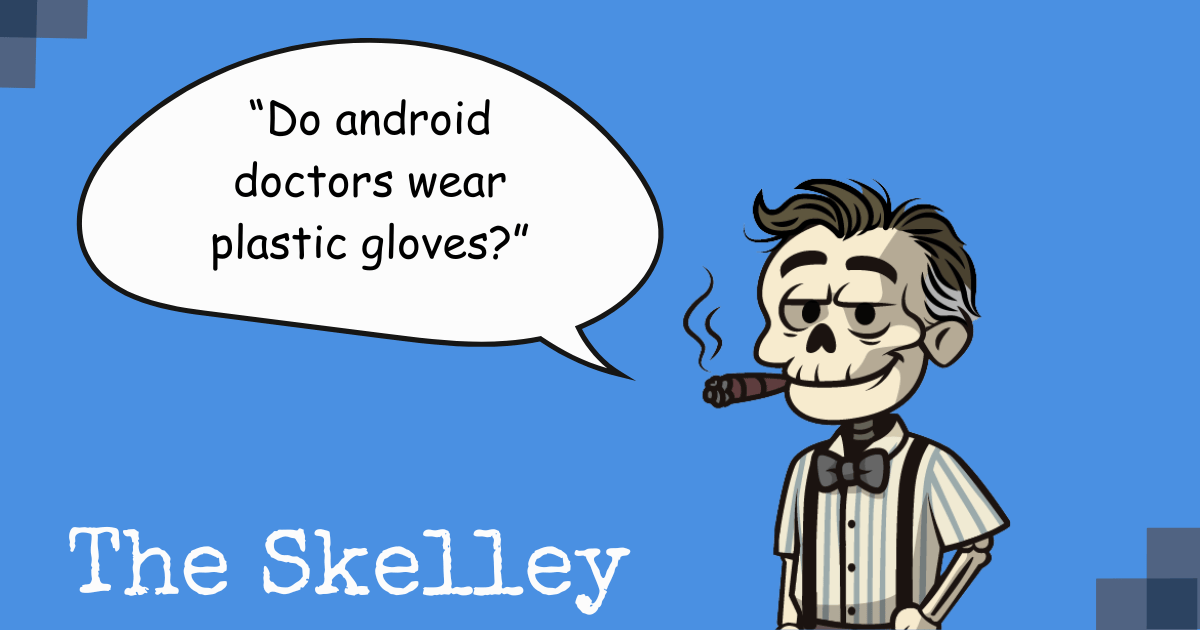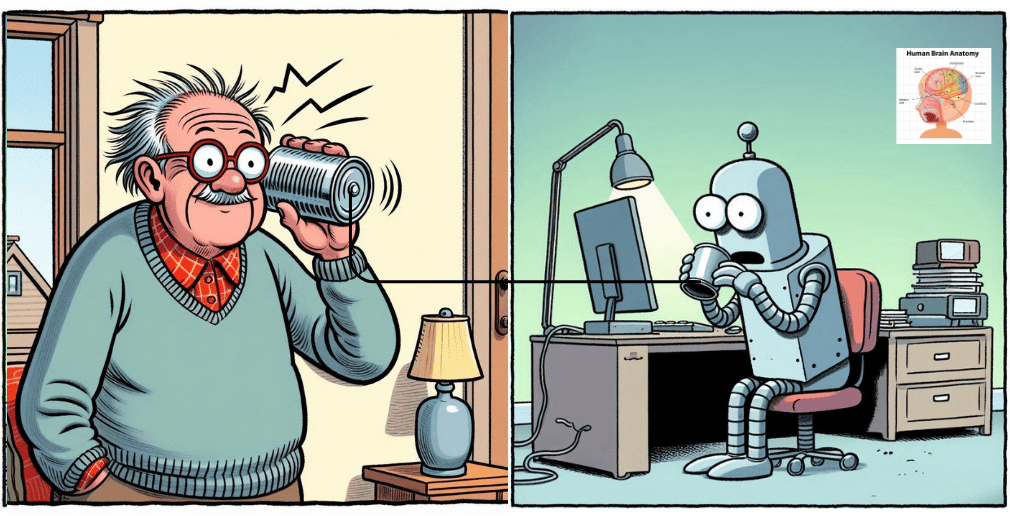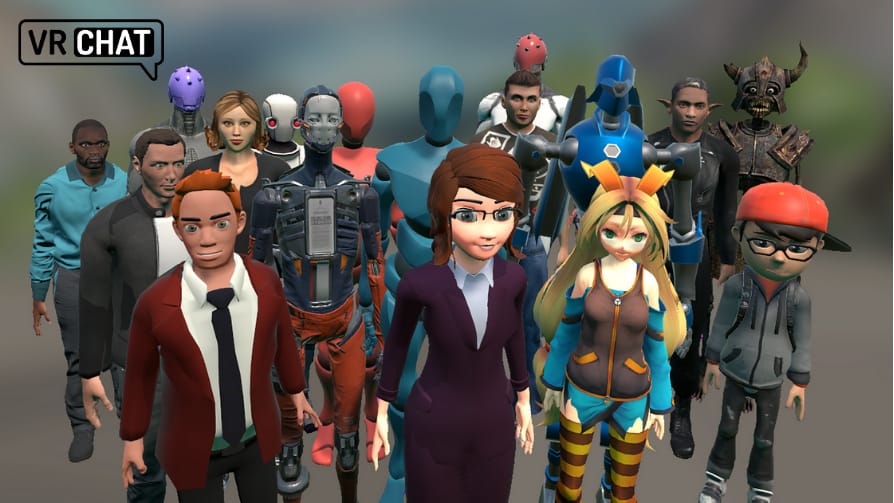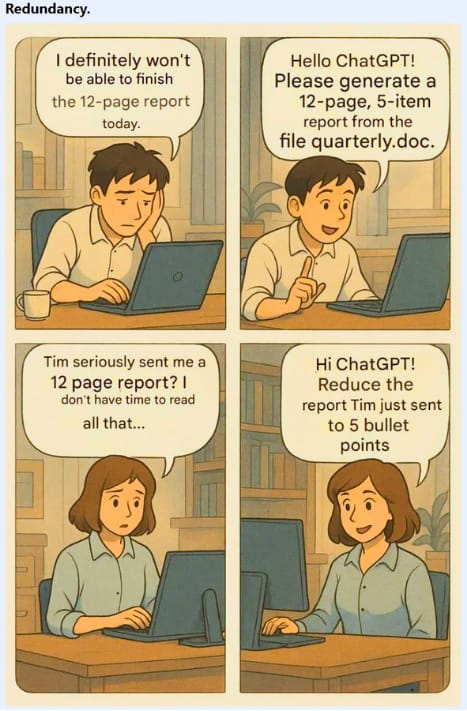- The Skelley
- Posts
- 🥽 The Reality of Virtual Reality
🥽 The Reality of Virtual Reality
👩⚕️ The bedside manner of AI is just what the doctor ordered!

New Fangled News for Boomers, Gen X and Anyone Else Trying to Keep Up with Technology
Top Stories from the Newsroom
✂️ Skelley’s Snippets: Green Machine, Grumpy Hackman, and Hallucinating AI
🏥 New tech in your doctor’s office eliminates those pesky paper forms
🚘 Virtual Reality can be a compelling distraction from personal growth
🧟 The Uncanny Valley phenomenon and the challenge to generate authentic AI humans
Skelley’s Snippets ✂️

🌀 The original Green Machine was more than just a toy—it was a playground legend, leaving the Big Wheel in its dust with smooth speed and incredible spins. Before gadgets ruled the world, it reigned supreme. The modern ones are pretty slick too!

🎞️ Per The Times, the late Gene Hackman's frustration with Wes Anderson's directing and flat-fee pay on The Royal Tenenbaums sparked a grumpy set dynamic and they reportedly had no contact after filming. Still, Anderson's pursuit of the iconic actor paid off, as the film earned critical acclaim, including a Golden Globe nomination for Hackman's performance.

⚖️ In a high-profile copyright lawsuit, Anthropic’s Claude AI recently made headlines when it messed up a legal citation—making up a fake article title and authors. The blunder had the company’s lawyers scrambling to issue an awkward apology. It’s a good reminder that AI-generated content needs a solid fact-check, especially since slip-ups like this can cause problems well beyond just the legal world.

🎵 *Warped vinyl records can distort sound and frustrate even the most dedicated collectors. The Vinyl Flat Record Flattener tackles this issue by applying controlled pressure and optional gentle heat through a sturdy pouch system, where records are sandwiched between precision-machined plates to restore their original flatness. Celebrated by vinyl enthusiasts, this innovative tool offers a reliable, hands-off way to revive cherished LPs for pristine playback. Learn how it works.
*(Advertisement)

Ending The Telephone Game With Your Doctor 🩺

Artificial intelligence is revolutionizing doctors’ appointments, making them faster and more patient-focused. As highlighted in a Fast Company article, AI tools are cutting administrative burdens, reducing wait times, and improving care. Picture a clinic where AI organizes your medical history, minimizing repetitive forms.
Ambient scribing technology uses AI to turn doctor-patient conversations into clinical notes, freeing physicians to focus on care instead of paperwork. Startups like Health Note streamline pre-visit intake with AI chatbots, cutting intake time by up to 90%. Predictive AI tools help spot health risks early for personalized advice, while AI also ensures doctors can send clear follow-up instructions.
However, with high-profile healthcare data breaches in recent years, privacy is a valid concern. To address this, AI systems in healthcare are tightly regulated under laws like HIPAA. Encrypted data storage, secure cloud platforms, and regular audits help safeguard your information.
Patients can ask providers about AI vendors’ security certifications and data-sharing policies for peace of mind. While no system is breach-proof, these practical measures significantly reduce risks.
As AI eases healthcare’s staffing crunch, it’s making appointments less stressful and more personal—securely. Your next visit could be your smoothest yet. -GP

VR Has Entered The Chat 🥽
Occasionally, I encounter something that intrigues yet horrifies me at the same time. Golf is a good example of this weirdness. In much the same way, Virtual Reality seems to fall into this category as well. It’s hard not to be taken in by the escapist qualities of VR.
It appears that I am not alone in my fascination. Already, VR is a huge and sprawling market. There are an estimated 171 million VR users worldwide. In the United States, approximately 20% of households have used VR.
It’s not a leap to think that the VR growth rate will mirror the same path as telephones, televisions, and the personal computer: one for every home.
The largest segment of the VR market is entertainment—especially gaming. And wrapped up in the entertainment category is a whole subculture tied to what I’ll call virtual socialization.
In other words, there are millions of humans opting out of reality to socialize with other humans within the world of Virtual Reality. If you want to get really unnerved, read this article courtesy of WIRED magazine.

So here is where I struggle…
I want to be the type of person who falls back on niceties like “to each his own,” but I think there is a bigger picture here. Technology is not the answer to everything, and as a species, we cannot afford to lose the connective tissue of true human interaction.
Naturally, Steven Spielberg captured this notion perfectly with his virtual reality movie Ready Player One. Yes, it’s a movie and still an exaggeration of what’s technologically possible, but it’s also not that far off.
And don’t forget about AI, which is supercharging Virtual Reality, allowing autonomous avatar development to reach new, scary heights of interactive behavior. In no time, it will be impossible to tell if behind the dancing cat is an actual human wearing goggles or just the social side of your friendly neighborhood Large Language Model.
I used the word escapism earlier. It’s the right word for what draws people to virtual reality—at least in the context of entertainment. So, let’s not forget why people want to escape.
Nobody runs away from something they enjoy. But the real lessons of life are found way beyond what we enjoy. Life can be about fulfillment.
Life is sometimes about doing the hard thing. In this case, it may be about going to the real party with real people—and realizing that whatever it is you don’t like about yourself, that holds you back from going to the party, is the thing that needs to be embraced and not something to run away from. -EB

99% Human Is Not Enough 🚶♂️👴
In the original The Adventures of Pinocchio, written by Carlo Collodi in 1881, Geppetto is a poor woodcarver who creates Pinocchio initially to make a living as a puppeteer—not purely out of fatherly love. That fact crossed my mind when I saw Google’s latest AI video creation tool, Flow.
There’s no denying that this technology is remarkable. But even the best AI video generation tools struggle to create believable humans. I just watched the short film Freelancers by Dave Clark, and to put it bluntly, all the AI people look dead inside—deprived of a soul.
This isn’t a critique of those building or using AI tools—just a quick observation about how easy it is to get swept up in the hype. AI is fascinating, so it’s no surprise it grabs our attention. But every now and then, it’s worth remembering that much of what draws us to AI actually reflects something deeply human. |  (Image Credit: Google) |
These tools aren’t perfect stand-ins for real people yet, but the line between real and virtual is definitely blurring. Before long, we might need some kind of rating system to show how much of what we see is genuine versus AI-generated. Okay, I’m off to go touch some grass. -LC
In Flow, AI can help make clips from prompts, build them into scenes and then save your ingredients - such as characters, locations, objects or styles - all in one place. ↓
— Google DeepMind (@GoogleDeepMind)
6:34 PM • May 20, 2025

Laugh Lines 🤣

Your Feedback is Appreciated
Looking for unbiased, fact-based news? Join 1440 today.
Join over 4 million Americans who start their day with 1440 – your daily digest for unbiased, fact-centric news. From politics to sports, we cover it all by analyzing over 100 sources. Our concise, 5-minute read lands in your inbox each morning at no cost. Experience news without the noise; let 1440 help you make up your own mind. Sign up now and invite your friends and family to be part of the informed.
DISCLAIMER: Nothing in this newsletter is financial advice or any other kind of advice for that matter. This is strictly for entertainment and fodder for occasional thoughtful reflection. The owners of The Skelley may benefit financially when readers click on links in the publication.




Reply